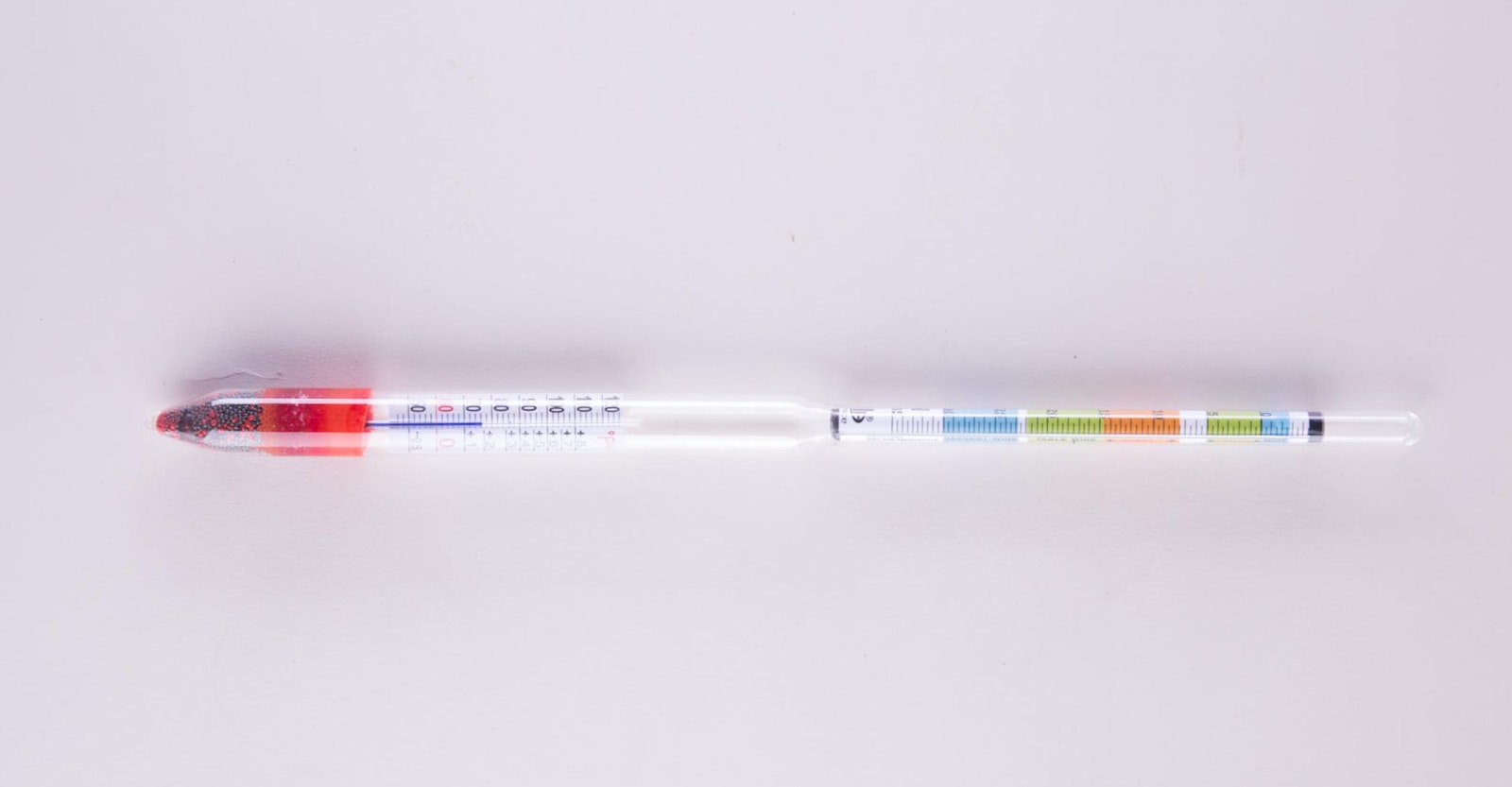If you’ve been homebrewing for any amount of time, you already know to expect the unexpected. You might get your hands on a bad batch of yeast and your beer doesn’t ferment. Or your yeast might ferment so quickly you worry it didn’t ferment at all. Or Uncle Ernie might be far loopier than he should be after only one beer.
This is where your hydrometer can save the day (and your uncle’s liver). It’s an often-overlooked step in brewing, even though it’s quick and painless. Get in the habit of using it during every batch to determine if your fermentation has finished, maintain consistent results, and measure your estimated alcohol by volume (ABV).
Although you could run into occasions where a batch can’t be saved, you can record your mistakes and make sure they’re not repeated next time. Or, in the case of your ABV being far higher than expected, you can make smaller pours or move to a session beer after your first glass.
Let’s look at some available hydrometers. The three types described below are suitable for up to 22 percent ABV, so they’re useful for beer, mead, cider, and wine.
Triple Scale Hydrometer
This is the most commonly used hydrometer, and the least expensive at around $5–15. It’s also multi-functional, and measures specific gravity, Brix/Balling scale, and potential alcohol. This type of hydrometer measures a wider range of specific gravity (0.00–1.170) so one size fits most batches. However, this also means that your readings could be off a little bit, because the device can measure a larger range of numbers.
Thermohydrometer
The thermohydrometer measures specific gravity and temperature. Thermometer calibrations can vary by device, so you risk inaccurate readings if you’re not using the same one each time you test. But having the thermometer built in ensures your temperature is consistent. The price point of $10–$15 is great because you’re getting two instruments in one.
Precision Hydrometer
The precision hydrometer measures specific gravity, and numbers are spaced on a smaller scale, which means you can get a more accurate reading. However, you may have to buy two hydrometers, depending on what you’re brewing. Some of them measure 1.000–1.070, and the others 1.060–1.130, whereas most other hydrometers measure 0.00–1.170. Precision hydrometers sell for around $30, but if getting the most accurate readings is important to you, this particular hydrometer is worth the extra investment.
Things to Consider
- Glass breaks, especially when you’re dealing with wet hands and lots of moving parts. Many hydrometers come with a testing jar at no extra cost that does double duty as a case, but the cylinders are thin plastic with strength that’s comparable to a Solo cup. Do your homework when shopping online—while some hydrometers clearly come with the testing jar, some retailers don’t make that as obvious.
- If it fits your budget, buy a testing jar (or graduated cylinder) that has a wide base and a cuff around the top that doesn’t allow the jar to tip all the way sideways. A 14" cylinder with bumpers can be found online for about $8–10.
- Store your hydrometer in a sturdy case so to avoid any unpleasant surprises on brew day.
- Perhaps you’ll feel better having two hydrometers on hand so you’ll always have a backup.
- Another hydrometer you might come across, the proof & tralle hydrometer, is designed for much higher ABV solutions, like spirits and liquors. It is not suitable for beers, wines, and meads.
- Before you take a reading test your hydrometer with distilled water (minerals frequently found in tap water can skew your results) before you test your beer. You’ll know if your readings are accurate or if you need to either adjust your equations or swap it for a new one.
- Many manufacturers use a paper scale inside the glass, which can slip around and result in inaccurate readings, so be sure you’re using one with a plastic insert.
A hydrometer is a useful tool that will save you many headaches—and many batches—down the road. Incorporate it into your process, and your batches will only continue to get better and more consistent with time.








